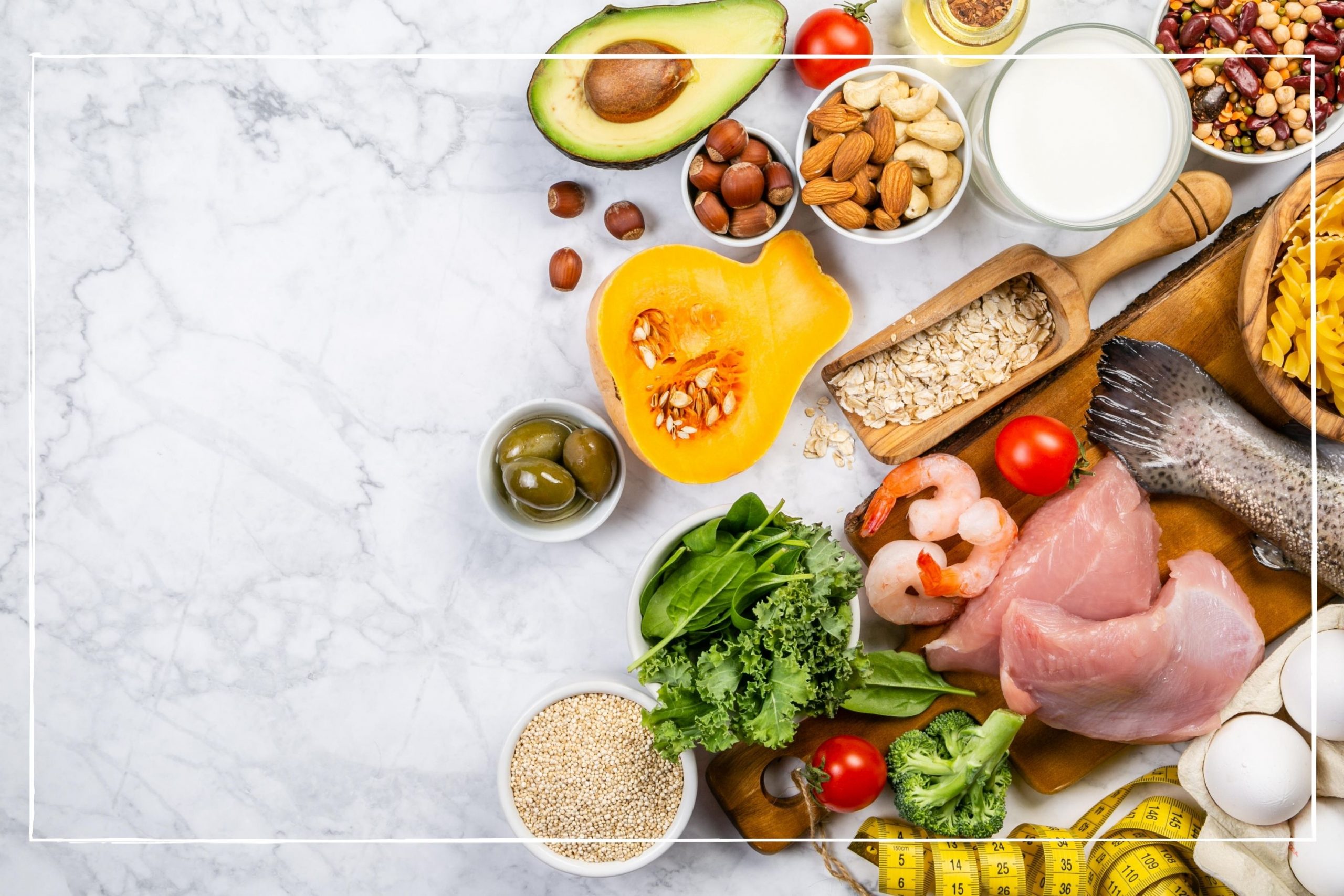What is the Dash diet and how does it work?
What is the Dash diet and how does it work?


The DASH diet is a great plan if you’re looking to introduce long-lasting changes to your eating habits and lifestyle
Although the DASH diet was originally created to lower blood pressure and reduce cholesterol, it has since been adopted as a general healthy eating plan by many. Studies have shown that the Dietary Approaches to Stop Hypertension(DASH) diet reduces the risk of diseases including stroke, heart disease, kidney failure and diabetes as well as some kinds of cancer.
Nutritionist Nishtha Patel says: “People that suffer with hypertension are at increased risk of heart attacks and strokes. The DASH diet works by limiting the amount of sodium that is consumed daily.”
However, like the Mediterranean diet the DASH diet focuses on making healthy choices and followers have found they can lose weight and stick to it long-term.
What is the DASH diet?
The Dietary Approaches to Stop Hypertension (DASH) diet is a healthy eating plan, which is rich in fruit, vegetables, low-fat and non-fat dairy. It also includes mostly whole grains; lean meats, fish and poultry; nuts and beans. It is high in fibre and low in salt, added sugars and fat.The main success of the diet plan is that it limits sodium-rich salt, which drives up blood pressure and saturated fat, which can increase bad cholesterol.
The DASH diet was developed in the 1990s, when the National Institute of Health in the USA started funding research to see if dietary interventions could be used to treat hypertension (high blood pressure). It's aim was to tackle the country's increasing rise in diseases such as diabetes, obesity and heart disease. According to this 2021 review, for example, around 30% of USA adults have high blood pressure.
While studies found that the DASH diet achieved its intended aim of lowering blood pressure, it was also found to be effective in reducing the risk of other diseases, including high cholesterol, heart disease and diabetes.
Parenting advice, hot topics, best buys and family finance tips delivered straight to your inbox.
As well as being recommended to those at risk of developing those specific diseases, it is also endorsed by the country's National Heart, Lung and Blood Institute as a general healthy eating plan for those wanting to look after their health.
The DASH diet encourages no more than 1 teaspoon (2,300 mg) of sodium (found in salt) per day. The lower-salt version recommends no more than 3/4 teaspoon (1,500 mg) per day.
Nishtha, who runs The Gut Expert, explains: "By following the DASH diet, it is highly probable that you would remove processed, convenience foods and ready meals, as they contain vast amounts of sodium. Instead you’d start to cook more homemade food from scratch.”
How does the DASH diet work?
The DASH diet is split into two phases. Phase 1 lasts two weeks and is designed to reset your metabolism. Phase 2 can then be used as a long-term healthy eating plan.
Phase 1
The first two-week phase is designed to reset and boost your metabolism. It achieves this by removing whole grains, which are carbohydrates, and fruit, which contains natural sugars, from the diet. This helps blood sugar levels to stabilise and avoids spikes. As a result, cravings will be curbed and the body's need for insulin, which drives sugar from the bloodstream into cells, will be reduced.
Instead, those following the diet can eat an unlimited amount of non-starchy vegetables, which contain very low amounts of carbohydrates. These include produce like carrots, courgettes, asparagus, broccoli, mushrooms and tomatoes.
Because this phase of the diet is also high-protein, as followers can eat lean meat, poultry and fish, it allows them to feel full and resist the temptation of snacking.
Due to the low carbohydrates and sugar, this is the point at which most people will see the biggest difference to their waistlines.
It is also important when following the DASH diet to control portion sizes and calories needed.
For example, daily calories needed for: Women aged 31-50 - calorie intake ranges from 1,800 to 2,200 Women aged 51+ - the calorie requirement drops to 1,600 to 2,000-2,200 Men aged 31-50 - calorie intake is between 2,200 to 2,800-3,000 Men aged 51+ - the calorie requirement drops to 2,000 to 2,400
The range depends on how active your lifestyle. You can work out your correct calorie intake on the National Heart, Lung and Blood Institute's website.
Once you know your daily calorie needs, the website also advises how many servings from each food group you should eat per day. It is important not to eat too much or too little of each food group, in order to maintain the correct balance of nutrients.
Phase 2
The second phase sees the reintroduction of whole grains and fruit. This phase is all about maintaining and continuing your weight loss, as well as improving cholesterol and blood sugar levels.
The idea is that it will enable followers to make lasting changes to their eating to improve their health, as it can be used as a long-term plan.
So followers should continue to avoid processed food, which contains high levels of salt, as much as possible. Anything high in salt, sugar or fat, such as fried foods, cakes, crisps and chocolate should also be viewed as rare treats.
As well as having proven benefits for your health, it is also a good plan to follow to lose weight or maintain weight loss.
This study found that participants on the DASH diet lost more weight than those on another calorie-restricted control diet.
A post shared by Dr. Melinda Ring | Holistic Health Expert for Women (@drmelindaring)
A photo posted by on
What are the benefits of the DASH diet?
The main benefit of the DASH diet is that it lowers blood pressure. However, studies have also found that it reduces the risk of a number of other diseases too. In addition, it is easy to follow and is therefore viewed as a good long-term healthy eating plan.
Research into the DASH diet has shown it:
✅ Lowers blood pressure
Blood pressure is a measure of the force that the heart uses to pump blood around the body. There are a number of different factors which can increase our blood pressure, including a person's age, weight and lifestyle choices, such as smoking and drinking alcohol. Blood pressure is measured in millimetres of mercury and is recorded by two numbers. The systolic pressure (the higher number) is the force at which your heart pumps blood around your body. The diastolic pressure (the lower number) is the resistance to the blood flow in the blood vessels.
Although everyone's blood pressure is slightly different, an ideal reading is usually considered to be between 90/60mmHg and 120/80mmHg. As a general guide, high blood pressure is considered to be 140/90mmHg or higher. According to the NHS, around a third of adults in the UK have high blood pressure, although many will not realise it. If you are unsure of your blood pressure you can have it tested at a GP or pharmacy, or can take it yourself via a home-testing kit.
The good news is that studies have found that following the DASH diet reduces blood pressure. This is important, as high blood pressure can increase the risk of a number of potentially life-threatening health conditions. These include heart attacks, strokes, kidney disease and vascular dementia.
In addition, following an exercise plan such as Couch to 5k or a HIIT workout challenge could help to lower your blood pressure even more.
A study looking into the impact of additional exercise and weight loss when on the DASH diet found overweight and obese people achieved even larger blood pressure reductions when they combined the two.
✅ Lowers 'bad' cholesterol levels
As well as high blood pressure, high levels of low-density lipoprotein (LDL) cholesterol, known as 'bad' cholesterol, are a major risk factor for cardiovascular disease. According to the National Heart, Lung and Blood Institute, follow-up reports to this trial, which include 459 adults, showed the DASH diet also lowered LDL cholesterol levels.
✅ Decreases the risk of diabetes
Due to the diet's effect on the body's need for insulin, studies have shown that it lowers the risk of type 2 diabetes. In this analysis of 18 studies, researchers found that healthy eating plans including the DASH diet were associated with a 20% decrease in the risk of future type 2 diabetes.
✅ Reduces the risk of heart disease and strokes
In this long-term study, looking at eating habits over a 24 year period, adherence to a DASH-style diet was found to be associated with a lower risk of chronic heart disease and stroke among middle-aged women.
✅ Lowers the risk of some cancers
A number of studies have suggested that the DASH diet could lower the risk of some cancers, including colorectal, breast and lung. This review found that following the DASH diet was significantly related to a lower prevalence of various cancers due to its high content of fibre, nutrients, vitamins, minerals and antioxidant capacity.
Nishtha explains that by choosing healthy options, followers are often cutting out many of the foods which increase the risk of certain diseases. She says: “As the food you eat needs to be tracked, people on this diet do start to become more aware of what they are putting into their bodies.It is a relatively easy plan to follow and is high in magnesium, potassium, calcium, fibre and protein.”
Is the DASH diet good for weight loss?
One of the additional benefits of the DASH diet is that it can lead to weight loss. Researchers have found that it is a good choice for weight reduction, particularly for overweight and obese participants.
By reducing sugar, salt and unhealthy fat in their diets, many followers of the plan have found that they have lost weight. This is especially true in Phase 1 of the plan.
Nishtha says those who often see the biggest difference in weight are people who were eating a diet high in salt and sugar beforehand.
She adds: “Studies have shown that the DASH diet can lower blood pressure in as little as two weeks. The diet can also lower low-density lipoprotein (LDL or 'bad') cholesterol levels in the blood.”
This study found that the diet results in greater weight loss when combined with exercise. So downloading a fitness app to add some exercise into your routine may be a good option.
What can you eat on the DASH diet?
In Phase 1 of the DASH diet, followers eat mainly non-starchy vegetables, of which they can have an unlimited amount. This is accompanied by small amounts of protein such as lean meat, fish, low-fat cheese and nuts, which help you to feel fuller for longer. Phase 2 then sees the reintroduction of fruit and whole grains.
It is worth visiting the National Heart, Lung and Blood Institute's website in order to calculate how many calories you need. This will then help you to understand how many servings from each food group you should eat per day.
Below are example food lists for each phase of the eating plan, based on a 2,000-calorie diet.
Phase 1 daily food list and portion size examples:
Non-starchy vegetables: (Unlimited, but minimum of 5 servings. One serving includes: 1 cup raw leafy vegetables, ½ cup cooked vegetables, ½ cup vegetable juice.) Carrots, courgettes, aubergine, broccoli, cauliflower, mushrooms, peppers, tomatoes, leeks, pumpkin, squash, swede, turnip, Brussels sprouts, asparagus, cabbage, kale, lettuce, radishes, cucumber, celery, spring onions, spinach.
Low-fat dairy: (2-4 servings. One serving includes: 1 cup milk, 1 cup yogurt, 1½ oz cheese.) Fat-free milk, fat-free, low-fat or reduced-fat cheese, fat-free or low-fat regular or frozen yogurt.
Nuts, seeds and legumes: (1-2 servings. One serving includes: 1½ oz nuts, 2 tbsp peanut butter, 1/2 oz seeds, 1/2 cup cooked dry beans or peas.) Unsalted and unsweetened almonds, cashews, hazelnuts, Brazil nuts, walnuts and pistachios. Pumpkin, chia, sunflower, poppy and sesame seeds. Kidney beans, chickpeas, black beans, cannellini beans, pinto beans, lentils, split peas.
Lean meat, fish, eggs: (6-8 oz - one palm-sized portion of meat is around 3oz) Chicken, turkey, salmon, tuna, cod, haddock, plaice, seabass and white fish. Try to limit red meat, such as beef, lamb, pork, veal and venison (or eat very lean cuts and remove any fat.)
Healthy fats: (2-3 servings) Avocados, tofu, soybeans, olives, flaxseeds, chia seeds, extra virgin olive oil, avocado oil.
Phase 2 daily food list and portion size examples:
All vegetables: (4-5 servings. One serving includes: 1 cup raw leafy vegetables, ½ cup cooked vegetables, ½ cup vegetable juice.) Non-starchy vegetables and starchy vegetables, including potatoes, sweet potatoes, corn, parsnips, beans, butternut squash and peas.
Fruit: (4-5 servings. One serving includes: 1 medium piece of fruit, ½ cup fresh, frozen or canned fruit, ½ cup fruit juice, ¼ cup dried fruit.)Apples, apricots, bananas, dates, grapes, oranges, grapefruit, grapefruit juice, mangoes, melons, peaches, pineapples, raisins, strawberries, tangerines.
Whole grains: (6-8 servings. One serving includes: 1 slice bread, 1 cup ready to eat cereal, ½ cup cooked rice, pasta or cereal.) Whole-wheat bread and rolls, whole-wheat pasta, pita bread, bagels, cereals, oatmeal, brown rice, unsalted pretzels and popcorn.
Low Fat or No-Fat Dairy Foods: (2-3 servings. One serving includes: 1 cup milk, 1 cup yogurt, 1½ oz cheese.) Fat-free milk, fat-free, low-fat or reduced-fat cheese, fat-free or low-fat regular or frozen yogurt.
Lean meats, poultry and fish: (2 servings or less. One serving includes: 3 ounces cooked lean meats, skinless poultry, or fish, 1 egg) Chicken, turkey, salmon, tuna, cod, haddock, plaice, seabass and white fish. Very lean red meat, such as beef, lamb, pork, veal and venison (trim away any visible fat.)
Fats and oils: (2-3 servings. One serving includes: 1 tsp soft margarine, 1 tbsp low-fat mayonnaise, 2 tbsp light salad dressing, 1 tsp vegetable oil.) Soft margarine, vegetable oil (canola, corn, olive, safflower), low-fat mayonnaise, light salad dressing.
Nuts, seeds and legumes: (4-5 servings per week. One serving includes: 1½ oz nuts, 2 tbsp peanut butter, 1/2 oz seeds, 1/2 cup cooked dry beans or peas.) Unsalted and unsweetened almonds, cashews, peanuts, hazelnuts, Brazil nuts, walnuts and pistachios. Pumpkin, chia, sunflower, poppy and sesame seeds. Kidney beans, chickpeas, black beans, cannellini beans, pinto beans, lentils, split peas.
Which foods can you not eat on the DASH diet?
Foods to avoid in Phase 1 of the DASH diet:
- All fruit
- Starchy vegetables: Potatoes, sweet potatoes, corn, parsnips, beans, butternut squash and peas.
- Sugary foods: Sweets, cakes, ice cream and chocolate.
- Drinks: Alcohol, fruit juices and fizzy drinks.
Foods to avoid in Phase 2 of the DASH diet:
Anything high in salt, sugar or fat, including: Ready meals and anything with a high salt content, fried foods, cakes, pastries, sweets, crisps, salted nuts, ice cream and chocolate.
The DASH diet: a nutritionist's verdict?
Nishtha says: “Overall the DASH diet is a well-balanced diet. It encourages people to think about what they are putting into their bodies. Home-cooked food rich in vegetables, nuts, seeds, lean meat and fruit means that there is diversity and this is also great for the gut microbiome.
“The DASH diet has been proven to work and is effective at reducing hypertension and LDL cholesterol that cause cardiovascular diseases. I would recommend this diet to anyone that is concerned about their cardiovascular health. It is generally safe for most people. What this diet does do well is it teaches patients about the harmful ingredients that they may be consuming such as fried foods and hydrogenated fats. Highly processed and sugary foods, which have a detrimental effect on not just cardiovascular health but also gut and brain health too.
“The DASH diet nourishes the body with essential minerals and fibre that are needed for optimal health. It balances blood sugar levels, reduces harmful saturated fats and sugars and encourages good fats such as oily fish. All of these have been proven to help reduce the risk of cardiovascular disease, diabetes and certain cancers.”
However Nishtha also offers a warning about following a low sodium diet long-term. She says: “Long-term however, I would not like to put such a restriction on sodium. "Sodium is a mineral and electrolyte that plays an important role in inter and extracellular fluids. It is also needed for muscle and nerve conduction. Therefore, I would recommend the DASH diet as a place to start and after a period of 4-6 weeks I would want the patient to start transitioning to more of a Mediterranean style diet.”
Video of the Week

Emily-Ann Elliott is an experienced online and print journalist, with a focus on health, travel, and parenting. After beginning her career as a health journalist at The Basingstoke Gazette, she worked at a number of regional newspapers before moving to BBC News online. She later worked as a journalist for Comic Relief, covering stories about health and international development, as well as The Independent, The i, The Guardian, and The Telegraph. Following the birth of her son with neonatal meningitis, Emily-Ann has a particular interest in neonatal health and parental support. Emily-Ann has a degree in English literature from the University of Newcastle and has NCTJ and NCE qualifications in newspaper journalism.